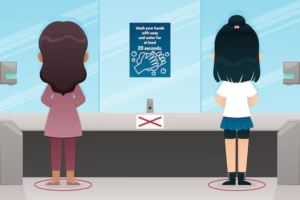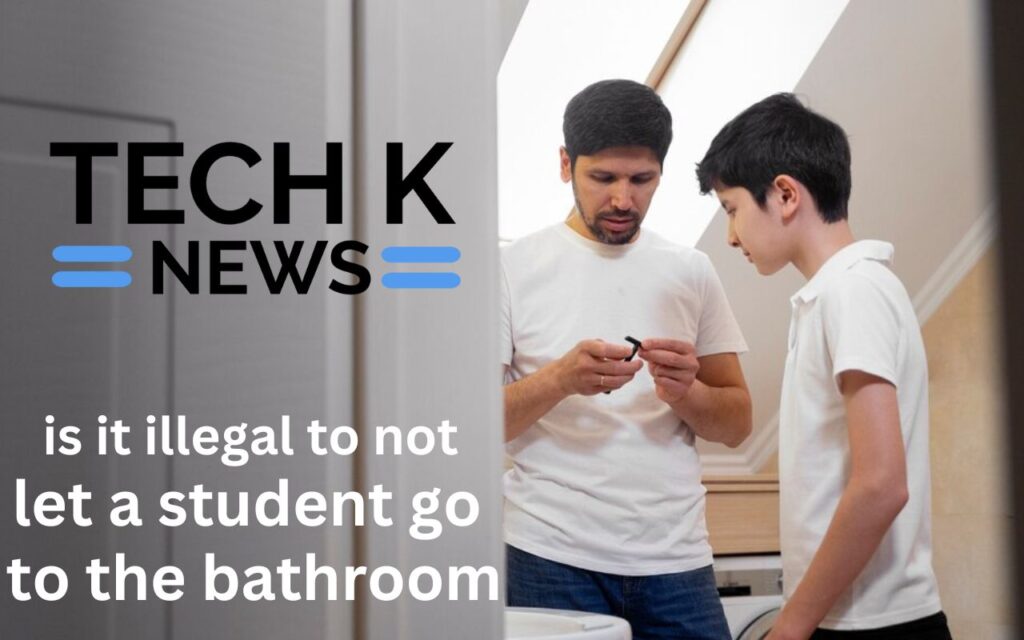Introduction
The debate over whether educators can legally restrict students’ bathroom access touches on fundamental issues of human rights, health, and classroom management. While teachers strive to maintain order and minimize disruptions, students’ basic physiological needs—and the potential legal consequences of ignoring them—cannot be overlooked. This article provides an in-depth exploration of the legal frameworks, health implications, and ethical dilemmas surrounding this contentious topic. Drawing on court rulings, medical research, and real-world case studies, we aim to answer the question: Is it illegal to deny a student a bathroom break?
Legal Insights: Is Denying Bathroom Access Illegal?
The legality of restricting bathroom access in schools is not explicitly addressed by a single federal law but is shaped by a mosaic of constitutional rights, anti-discrimination statutes, and judicial interpretations.
Constitutional Protections
Under the Eighth Amendment, which prohibits “cruel and unusual punishment,” courts have ruled that excessively denying bathroom access could constitute a violation if it results in physical harm or psychological distress. For instance, in Lovell v. Poway Unified School District (1996), a California court found that forcing a student to urinate in a trash can after repeated denials violated their constitutional rights. Similarly, the Fourteenth Amendment’s Due Process Clause protects students’ “liberty interests,” including the right to attend to basic bodily functions without undue interference.
Disability Rights and the ADA
The Americans with Disabilities Act (ADA) and Section 504 of the Rehabilitation Act mandate that schools accommodate students with medical conditions such as Crohn’s disease, diabetes, or overactive bladder. Denying restroom access to these students could constitute discrimination. For example, the U.S. Department of Education investigated a Texas school in 2018 after a student with a documented bladder condition was repeatedly denied bathroom breaks, leading to a settlement requiring policy reforms and staff training.
Title IX and Menstrual Equity
Title IX prohibits gender-based discrimination, which includes failing to accommodate menstruating students. A 2020 ACLU lawsuit against an Idaho school district argued that penalizing a student for menstrual-related bathroom needs perpetuated gender inequity. The case prompted the district to revise its policies to allow unrestricted restroom access during menstruation.
State Laws and Local Policies
Some states, like Illinois and California, have enacted laws requiring schools to adopt “reasonable” bathroom policies. Illinois’ Right to Restroom Access Act (2021) explicitly prohibits schools from denying restroom use unless there’s a documented safety concern. Conversely, states without specific laws often leave decisions to districts, resulting in inconsistent practices.
Key Takeaway: While no federal law outright bans bathroom restrictions, schools risk violating constitutional rights, disability laws, and anti-discrimination statutes if policies are deemed unreasonable or punitive.
Health Risks of Withholding Bathroom Privileges
Denying students timely bathroom access can have severe short- and long-term health consequences, particularly for vulnerable populations.
Physical Health Impacts
- Urinary Tract Infections (UTIs): Holding urine for prolonged periods allows bacteria to multiply in the bladder, increasing UTI risks. The National Institute of Health notes that adolescent girls are especially prone to UTIs due to anatomical factors.
- Kidney Damage: Chronic urine retention can lead to kidney infections or hydronephrosis (swelling due to urine backup), as highlighted in a 2019 Journal of Pediatrics study.
- Gastrointestinal Issues: Restricting bathroom use for bowel movements can cause constipation, hemorrhoids, or bowel obstruction.
- Menstrual Health: For menstruating students, delayed pad or tampon changes heighten risks of toxic shock syndrome (TSS) and infections.
Mental Health Consequences
- Anxiety and Shame: Fear of public humiliation due to accidents can trigger anxiety disorders. A 2021 study in School Psychology Review linked bathroom restrictions to elevated stress levels in 68% of surveyed students.
- School Avoidance: Students may skip classes or feign illness to avoid punitive bathroom policies, exacerbating absenteeism.
Case Study: In 2017, a Massachusetts middle schooler with social anxiety developed school refusal syndrome after being mocked for requesting bathroom breaks. Her parents successfully lobbied the district to adopt trauma-informed restroom policies.

Varied School Policies on Restroom Breaks
School policies range from lenient to draconian, often reflecting administrative priorities like safety or academic rigor.
Common Policy Models
- Hall Pass Systems: Many schools require students to carry passes or sign out, aiming to deter vandalism or loitering. However, critics argue this stigmatizes normal bodily functions.
- Time-Based Restrictions: Rules like “no bathroom during the first/last 10 minutes of class” aim to minimize disruptions but fail to account for emergencies.
- Grade-Level Differences: High schools often impose stricter rules than elementary schools, assuming older students can “hold it” longer—a flawed premise, according to pediatricians.
Controversial Examples
- Texas “No Pass” Policy: A Houston middle school banned bathroom breaks during standardized testing, leading to a parent lawsuit after a student with IBS soiled themselves. The district later revoked the policy.
- California’s Progressive Approach: Los Angeles Unified School District allows unlimited bathroom access but uses QR code check-ins to monitor usage patterns and address misuse.
Global Perspectives
In Finland, schools prioritize student autonomy, with no restrictions on bathroom use. Conversely, Japan’s strict classroom discipline often discourages breaks unless deemed “urgent,” a practice increasingly challenged by youth advocates.
Teacher Responsibilities and Student Needs
Educators walk a tightrope between maintaining order and respecting students’ dignity.
Classroom Management Challenges
- Overcrowding: With 30+ students per class, teachers worry about losing instructional time or losing track of students.
- Abuse of Privileges: A minority of students exploit bathroom breaks to skip class or vape, prompting stricter rules.
Best Practices for Teachers
- Flexible Pass Systems: Allowing 2–3 “no-questions-asked” passes per term balances accountability and trust.
- Discreet Communication: Using nonverbal signals (e.g., hand gestures) lets students request breaks without embarrassment.
- Trauma-Informed Approaches: Recognizing that some students (e.g., abuse survivors) may need frequent breaks for emotional regulation.
Professional Development Gaps
Few teacher training programs address restroom policies, leaving educators to rely on intuition. Workshops on bladder health, disability rights, and de-escalation tactics could bridge this gap.
Understanding Student Rights and Protections
Students possess legal and ethical rights to bodily autonomy, though enforcement varies.
Key Legal Protections
- Disability Accommodations: Under the Individuals with Disabilities Education Act (IDEA), students with IEPs or 504 Plans can request unrestricted bathroom access as a “related service.”
- Religious Accommodations: Muslim students requiring ablutions (wudu) before prayers must be permitted bathroom access under Title VII.
- LGBTQ+ Rights: Transgender students’ right to use bathrooms aligning with their gender identity is protected under federal court rulings like G.G. v. Gloucester County School Board (2020).
Advocacy Resources
- Office for Civil Rights (OCR): Students can file complaints with the OCR for alleged discrimination.
- ACLU Legal Support: The American Civil Liberties Union offers template letters for students challenging punitive policies.
How Parents Can Support Their Children
Parents are critical allies in ensuring fair treatment.
Step-by-Step Advocacy
- Document Incidents: Record dates, times, and outcomes of denied requests.
- Request a Meeting: Discuss concerns with the teacher, then escalate to the principal if unresolved.
- Leverage Medical Documentation: Obtain a doctor’s note for students with health conditions.
- File Formal Complaints: Submit grievances to the school board or OCR.
Success Story: An Ohio parent coalition pressured their district to install bathroom timers, ensuring students aren’t denied access for more than 5 minutes.
Legal Repercussions for Schools and Educators
Schools face significant risks for noncompliance.
Notable Lawsuits
- Doe v. Smith County School District (2022): A Tennessee district paid $150,000 after a student with Crohn’s disease was denied breaks, resulting in a hospitalization.
- OCR Investigations: The OCR resolved 12 bathroom-related Title IX complaints in 2023, mandating policy changes in 10 districts.
Reputational Damage: Media coverage of bathroom-related incidents can erode community trust and enrollment.
Strategies for Fair Bathroom Access Policies
Balancing accountability and compassion is achievable.
Policy Recommendations
- Medical Exemptions: Allow students with health conditions to carry “priority passes.”
- Gender-Neutral Bathrooms: Reduce stigma for LGBTQ+ and disabled students.
- Student Advisory Panels: Involve students in drafting policies to foster buy-in.
Case Study: A Michigan high school reduced bathroom misuse by 60% after implementing a self-regulation system where students earn extra breaks through good behavior.
Conclusion
While denying bathroom access isn’t universally illegal, schools must tread carefully to avoid violating students’ rights and harming their well-being. Proactive policies that prioritize health, equity, and dignity benefit everyone—students, educators, and communities alike. By replacing punishment with understanding, schools can uphold both discipline and humanity.


